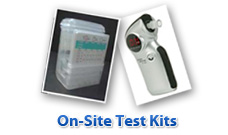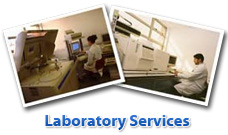LSD – Drug Information, Facts and Awareness
Welcome!
LSD – Drug Information, Facts and Awareness
What is LSD?
LSD (Lysergic acid diethylamide) is known by street names such as as acid, blotter, lucy, smilies, paper mushrooms, stars, tabs, M, window panes, sunshine or trips. It is a semi-synthetic psychedelic drug which originates from ergot, a type of grain fungus that typically grows on rye and is the most widely known of the hallucinogenic drugs. It is an extremely potent and an illegal Class A drug in the UK, carrying a penalty of up to seven years imprisonment and an unlimited fine or both for possession, and up to life imprisonment and an unlimited fine or both for supply or dealing, even if this is without charge and between friends.
How is LSD Taken? and what does LSD look like?
LSD is usually taken orally. This drug may come in the form of a liquid solution which is odourless, colourless and slightly bitter to the taste, and is sold in small vials. It was formerly distributed largely in pill form (frequently called microdots) and small squares of gelatine known as window panes, but the most common form of LSD is now blotting paper which comprises a sheet of blotting paper impregnated with the liquid drug solution, dried, and perforated like a sheet of stamps into small squares measuring a quarter of an inch square called ‘tabs’ or ‘hits’ which are currently sold individually at a street cost in the UK of approximately £1 to £5. The ‘tabs’ of paper are then swallowed or placed on the tongue to absorb the drug.
These sheets of squares often bear a psychedelic print or ‘blotter art’ with various illustrations on them such as strawberries, cartoons, aliens, geometric patterns, angels, Alice in Wonderland, depictions of the Swiss chemist Dr Albert Hofmann (who first created LSD in 1938) – and even Elvis Presley. The design is sometimes used to denote the manufacturer, batch or strength of the drug. It is estimated that since the mid 1970’s over 350 different prints have been produced.
LSD and the Government
LSD is widely known as a powerful hallucinogenic drug and was used internationally in an experimental capacity in the 1950’s and 1960’s by Governments to explore the possibilities of mind control, interrogation and social engineering. Military studies were even carried out to evaluate LSD as a weapon.
The Effects of LSD
Effects of taking the drug are usually experienced between 30 minutes to an hour after taking LSD and can last for up to 12 hours. Outward physical symptoms can be minimal, but may include dilation of the pupils, an increase in body temperature and blood pressure, sweating, sleeplessness, tremors and a dry mouth.
More dramatically, the psycho-emotional effects include visual hallucinations, delusions, an altered sense of time and space, a ‘crossover’ of the senses including sound and vision (called synesthesia) so that a user may experience hearing colours or seeing sounds, seeing straight lines as curved, static objects as moving, or ordinary objects such as faces or flowers ‘morphing’ or ‘melting’ into something entirely different and not always necessarily pleasant. Heightened religious and spiritual experiences may be encountered and a sense that a greater ‘truth’ about life or oneself has been discovered.
A bad ‘trip’ can result in total panic or severe depression, fear of death, fear of insanity and a feeling of being trapped in a very bad dream with no control. Rather than flowers or pretty colours, one may see demons, monsters or believe that friends can not be trusted or are thinking badly of them. Whether a trip is bad or good is largely dependant on the expectations, the mood and environment of the user when they take the drug. Generally speaking, LSD will amplify the current mood from contented to euphoric but potentially also from mild depression to terror.
Drug Information: The Dangers of LSD
More disturbingly, research suggests that underlying mental disorders hitherto not exposed may be triggered in an otherwise mentally healthy person causing lasting psychological ill effects. More frequently, flashbacks of a trip are reported by users which can occur days, weeks or even years after the drug experience. Many drug users report that just one tab can produce a single experience that changes their mind-set forever (whether good or bad), consolidating the general opinion that LSD is indeed a mind-altering drug even in the long term.
So – do people die from taking LSD? The answer, as with most if not all illegal drugs is yes. However, this is not usually a result of an overdose. As a result of its large index of toxicity, a huge concentration of LSD is required before death results by overdose. The US Drug Enforcement Administration reports that tabs seized contain on average of 20mcg – 80mcg LSD each which is a relatively low potency bearing in mind that a lethal dose of LSD has been estimated to be 14,000 mcg. In the case of a massive overdose, coma, bleeding disorders and respiratory arrest may occur. It should also be noted that pregnant women should never ever take LSD as it causes uterine contractions which could result in premature delivery and loss of their baby.
The most common danger lies in what is known as behavioural toxicity – uncharacteristic or abnormal behaviours brought about by drug use. These may be perceived as negative, such as suicidal tendencies, or positive, such as feeling superhuman – but both can be equally as dangerous and lead users to behave in a dangerous, irrational and sometimes fatal manner.
Is LSD Addictive?
LSD is not considered to be physically addictive because although tolerance levels can be built up whereby more of the drug is required to facilitate a trip, the compulsive drug-seeking behaviours of drugs such as cocaine, heroin or alcohol are not brought about by use.
Drug Testing – Testing for LSD
Whilst many other illegal drugs such as heroin, cocaine and cannabis / marijuana can be detected at home using a home drug test, LSD is not detectable in this way as the concentrations of the drug are too low to be detected by a visually read diagnostic test kit and a laboratory test is required to screen for LSD abuse.
For more information on home drug testing kits, please visit our home drug test FAQ page. Alternatively, for information on drug testing in the workplace, visit our workplace drug testing page.
Tags: Acid, Drug Abuse, Drug Awareness, Drug Information, Illegal Drugs, LSD, Lysergic acid diethylamide









